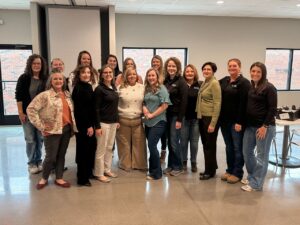Koetter Building Services, Fall Protection Division prides itself on ensuring anyone working from heights goes home to their families each day. According to OSHA and the Bureau of Labor statistics, falls from heights are one leading cause of workplace injuries and even death each year in the United States. Falls from roofs account for more than 40% of accidents in the workplace, largely coming in the construction industry, however, no one is immune from falling at work.
Conducting a risk assessment of your site or facility can be overwhelming and complex at times. An easy 5 step approach can offer a simple but effective way to achieve OSHA compliance and minimize the risk of injuries or even death from falls. Before your next audit, remember these five steps to ensure your first step is not your last.
STEP 1 – Accessing the Roof
How do you access your roof? Is your ladder, roof hatch, or portable ladder compliant and reducing risk of fall? Can unauthorized people access my roof? These are questions that need answered when verifying roof access, as this is the were most falls and injuries will occur.
STEP 2 – Fall Hazards at the Roof Access
In step 2, fall protection at the access or egress point needs to be assessed. The most important question is, are workers exposed to a fall hazard of more than 4ft? If the answer is yes, protection is required such as roof hatch guards or guardrail.
STEP 3 – Designated Walkways
The third step is to ensure that designated walkway routes are in place and are clearly defined. A walkway can ensure workers avoid fall hazards and stay on the intended paths only. Employers should clearly communicate and train workers to not deviate from the designated walkway.
STEP 4 – Equipment near Fall Hazards
Step 4 comes when workers must access points or equipment on the roof area for maintenance or other issues. Is your equipment on a sloped roof or 15ft from a leading edge? If so, protection must me put in place. Items such as guardrails, warning lines, or even fall restraint products can be used.
STEP 5 – Leading Edge
Left unguarded, leading edges pose a serious risk to workers. In step 5 identifying leading edges and correcting those left unattended can greatly reduce the risk of injury. Like step 4, guardrails, fall restraint, and fall arrest systems can be used to protect workers from falls.





